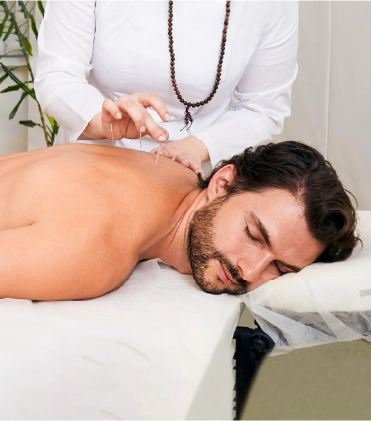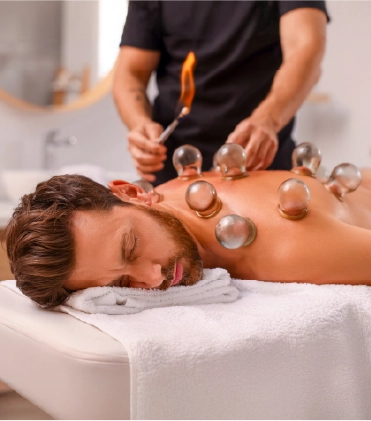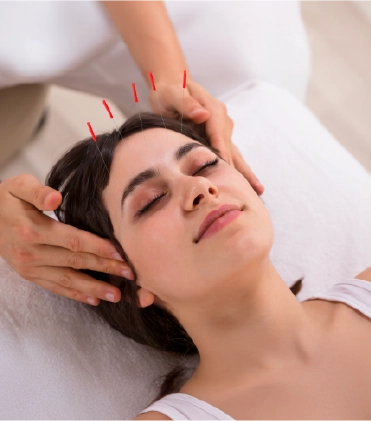What is the treatment?
Equine therapy is an exercise program in which professional practitioners guide the individual through activities with horses. Equine therapy can be used in different types of programs with specific goals, which may involve mental, physical, and occupational therapy. It is also known as horse therapy or equine-assisted therapy. In this program, the individual performs various activities that involve interactions with horses to promote healing. This therapy includes different activities such as grooming, feeding, riding, or simply being around horses to develop trust, communication, and self-awareness. It is particularly effective for individuals who have the symptoms of trauma, anxiety, and developmental challenges.
Philosophy/Origin
Equine therapy originated from the traditions of ancient Greece, where horseback riding was used as a therapy for physical ailments. Modern equine therapy has been modified from the 19th century and is now being used in different types of rehabilitation programs for wounded soldiers and patients with physical and mental disabilities. The philosophy behind equine therapy highlights and works on the therapeutic bond between humans and horses by using the sensitivity of horses to human emotions to promote healing and personal growth.
Physical Benefits
Mental/Emotional Benefits
Long-Term Wellness
Equine therapy develops and encourages social connections and teamwork which improves the confidence of the individual. It helps the individual to process and overcome emotional challenges and to face difficult situations in life with a positive attitude. It is a holistic healing which involves physical exercises, emotional support, and mindfulness for maximum recovery and health.
Ideal Audience
Equine therapy is beneficial for children, adolescents, and adults with social anxiety and communication problems. It is particularly designed for individuals who better learn from experiments and realistic experiences or prefer outdoor activities close to nature.
Specific Conditions
The treatment of equine therapy consists of the following steps
Initial Assessment
A therapist performs the initial assessment to understand the unique needs, goals, and comfort levels of each individual with horses. During this evaluation, the therapist discusses previous experiences with horses and makes it clear what the individual hopes to achieve through therapy.
Introduction to Horses
In this session, individuals are introduced to the basic behaviors and characteristics of horses. The professional explains necessary safety protocols and proper care techniques to make sure that individuals feel safe when interacting with the animals.
Hands-On Interaction
Individuals engage in hands-on activities such as grooming, feeding, or leading the horse. These tasks are specifically designed to build trust between the participant and the horse. Individuals usually develop a connection with the animals through this session, which helps to gain maximum benefits from the session.
Mounted Therapy
During mounted therapy, individuals are encouraged to ride horses according to the ability of each individual. The therapist guides the individual through the whole session to improve physical coordination and balance. It helps each individual gain confidence and progress at their own pace.
Therapeutic Exercises
Individuals engage in specific exercises that are performed to improve communication, problem-solving skills, and emotional awareness. These tasks are specifically planned to challenge individuals within a supportive environment. It promotes the personal growth of the individual.
Closure
At the end of each session, the individual discusses the experience of the session with the therapist. This time is used to process feelings and experiences during the activities.
What to Expect
Individuals may feel nervous around the horses at the start of the session but often find the experience calming, which increases their confidence. Horses are non-judgmental species and are also able to respond according to emotional cues, which creates a unique environment and comfortable environment. Activities are performed under the supervision of a trained therapist and a horse handler to ensure safety. Over time, individuals develop a bond of trust with the horse.
Immediate Effects
Long-Term Effects
Before the Treatment
The individuals should wear secure and comfortable clothing with closed-toe shoes to provide safety. It is recommended to avoid strong scents and perfumes that may disturb the horses. It is better to share and discuss any type of allergy, fear, and health condition with the therapist before the session to avoid any inconvenience.
Aftercare
After the session, the therapist asks about the experience of the individual to share their thoughts and emotions. The therapist also recommends practicing mindfulness to maintain the sense of calm achieved during therapy.
Equine therapy is performed at specialized equestrian centers, rehabilitation facilities, and therapeutic riding programs. Licensed therapists or certified equine specialists usually supervise the session to promote a comfortable and safe environment. Equine therapy can be performed on an individualized program, or it can be conducted as a group therapy. Many platforms like Wellencia offer equine therapy for a wholesome experience.









